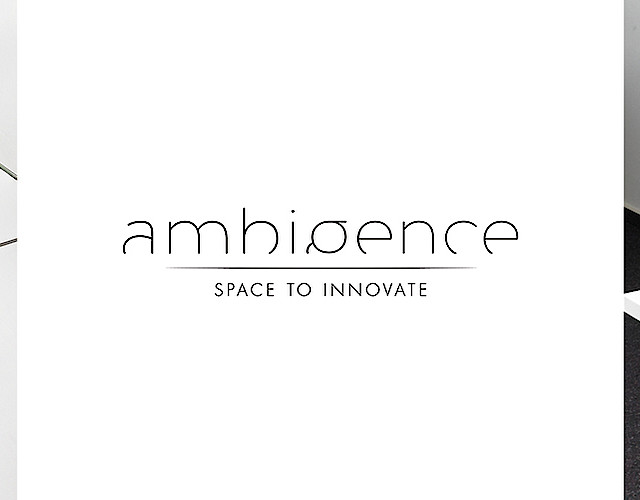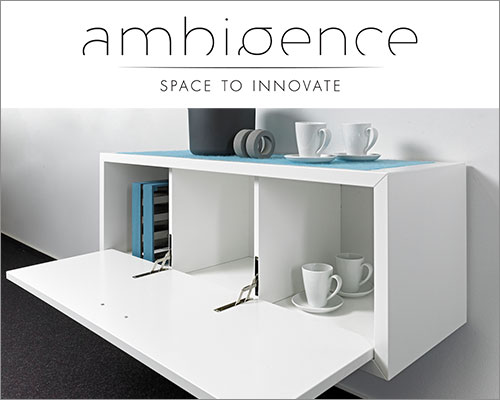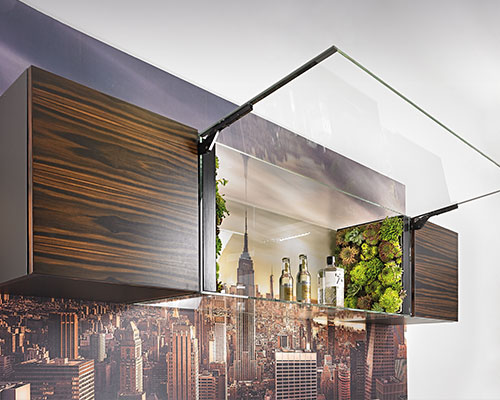

Turning ideas into new products, reconsidering furniture, supporting industry with know-how and preparing the ground for innovative technologies – this is the portfolio offered by ambigence, the think tank for the furniture industry.
"We want to create room for innovations and for thinking around corners, room where the impossible becomes possible,” that’s how Norbert Poppenborg, Director Marketing & Business Development of ambigence GmbH & Co. KG, describes the basic sense of direction and philosophy of the company. The certified specialists for innovation and project management support their industrial clients in developing business models, in the strategic management of protective rights, in product development and marketing.
The think tank had very early beginnings in the Hettich Group, a world market leader in the production of mounting hardware for furniture, where the ambigence founders Oliver Schael, today’s ambigence CEO, und Norbert Poppenborg worked on the development of innovative cabinet door hinges. Inspired by revolving doors with countersunk hinges, the team started developing mounting hardware sunk into the carcase side which would not take up valuable space in the carcase. In this process, the cabinet side panel thickness was not allowed to exceed 19 mm. In order to convince the furniture manufacturers – in particular those serving the high-end niche – of the idea, the developers put the cabinet design in the foreground and conceived the vision “The Panel is the new Fitting“. This vision stands for the perfect fusion of design and technology by considering the furniture side panel and its function as an indivisible entity and hence creating a functionalized furniture component.

After numerous design studies that covered the subject, Schael and Poppenborg presented their concept and the first fully countersunk door hinge for wall cabinets with folding doors to selected customers at first. Encouraged by the positive response of the expert public, they took the next step in 2018: the foundation of ambigence GmbH & Co. KG. "This network allowed us to bundle the requirements from the furniture industry in order to lay the basis for a standard for countersunk mounting hardware that would be as valid in the market as the 32 mm cabinetmaking system is today. This is the only way to ensure equal competition for countersunk and conventional mounting hardware,” Norbert Poppenborg explains. Moreover these standards guarantee that a furniture manufacturer can utilize its existing equipment for integrating the innovative mounting hardware.
The first fully countersunk door hinge, the “ViZard by ambigence“ was developed by ambigence together with Hettich and was presented to the expert public for the first time at the Interzum 2019 – the industrial fair that sets the benchmark for the industry. In lift door cabinets with frameless glass fronts, ambigence brilliantly presented the advantages of hingeless cabinet doors. Their work paid off soon: in the same year, the ViZard was awarded with the Red Dot Design Award. The explanation of the jury: "Utilizing advanced technology, the 'ViZard by ambigence' door hinge comes up to the high demands placed on aesthetics and puristic design solutions.”
"Unico“, the second countersunk hinge, was a joint development by ambigence and the Italian company Effegi Brevetti, industry leader for lift-down cabinet doors.

When developing its ideas, ambigence cooperates with various partner companies each of which is a specialist in its field. Among them are designers, joiners, glue and panel manufacturers as well as machine builders such as the IMA Schelling Group. Being one of the first partners of ambigence, IMA Schelling played a decisive role in implementing countersunk mounting hardware in furniture. "ambigence was not yet founded, when Norbert Poppenborg already asked for our expertise regarding the required machining of pockets and holes for the mounting hardware,” says Thomas Hampel, Technical Director at IMA Schelling. It became clear very soon that the side panel which had to integrate the mounting hardware needed internal broaching. IMA Schelling not only advised the ambigence team in this matter, but also supplied the machined side panels for the first functional models.
Every cabinet side panel designed to integrate the new countersunk hinges initially consists of two thin single panels, each faced on one side and max. 10 mm thick, with an edging tape already applied onto the side face near the hinges. In order for the panels to be able to integrate the hinges, a large amount of material is removed symmetrically from both panels. In the end, only 1 to 1.5 millimetres remain in the hinge area on each single panel. After that, the hinges - which give the side panel the required stability - are mounted, and both panels are glued to each other over the entire area. Finally, the edge-banding operation is performed on each of the three side faces not concerned by the hinges.
This form of integration opens up the possibility of using the complete mounting space of the side panel. The other big advantage of this method is that raw panel and furniture manufacturers can utilize standard processes and existing technology. However, for the time being, many production steps such as the mounting of the hinges and the edgebanding of the panel are carried out manually due to the currently demanded quantities. "When the demand for hingeless cabinets increases, it will make sense to develop appropriate assembly technology,” Thomas Hampel explains.
There are three different ways of mounting the hinges: In one method, the whole hinge and the side panel are glued together. As an alternative, a cassette can be glued into the side panel into which the hinge is then inserted, or a hinge mounting plate is used instead of a cassette. The hinge itself, however, remains the same. Each method has its advantages: For hinges covering a large area the gluing method has proven effective. On the other hand, the hinge mounting plate or cassette allow hinges to be replaced in the event of a defect. In addition to that, the cassette gives the side panel the required stability.

At the moment, the ambigence team is working with other international manufacturers of mounting hardware on new integrable functions designed to allow furniture manufacturers to develop a complete product range with invisible hinges. Furthermore, ambigence has discovered the 'Panel' topic for itself and is thinking about which other functions can be integrated in the cabinet side panel. Aside from companies of the furniture industry, also companies from other industries are increasingly asking ambigence for development help. "Right now we are advising two companies that have had nothing to do with furniture so far. They have developed an exciting technology so far unknown in the furniture industry and asked us for testing and access to the market,” explains Poppenborg.
Poppenborg, Director Marketing & Business Development: We are guided by the concept of design – puristic design. In today's modern flats, everything is integrated already. Heaters are hidden under the floor, luminaries are concealed in the ceiling and flushing cisterns are integrated into the wall. Also more and more glass is used in buildings and facades. Hence it seemed logical to us to develop hinges that disappear in the cabinet side panel. However, in the furniture industry, the demands placed on design ceased to exist behind the front panel. But we are convinced that customers like purism – also for furniture.
Poppenborg, Director Marketing & Business Development: No, we only started with that. We are permanently looking for further possible functions that can be integrated in a furniture side panel. Our goal is to implement functions that have so far been unconceivable. In this process, we not only focus on the functionality of mounting hardware.
Poppenborg, Director Marketing & Business Development: Soon. At the Salone del Mobile and FuoriSalone in Milan this year, we will present new visions, concepts and prototypes to the expert public, and we are very curious to get feedback from visitors. Moreover, on 4 July, we are going to organize a practice seminar together with the glue manufacturer JOWAT. The topic will be the technical side of integrating the mounting hardware. We are currently in contact with IMA Schelling and hope that they can show us a film about the manufacturing process.
Founded in 2018 as a spinoff of the mounting hardware manufacturer Hettich, the Herford-based company ambigence GmbH & Co. KG (ambigence = ambience + intelligence) today is an independent company that commits itself to the development of innovations for the furniture industry. In cooperation with industry partners, ambigence develops innovative mounting hardware, brings the products to market maturity and receives a licence fee from the sale of the products.
